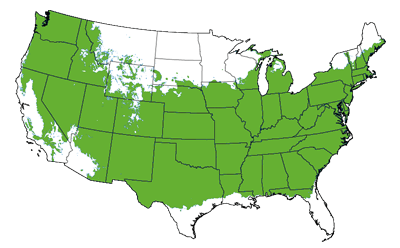Crimson Queen Japanese Maple
Product Details
 Growing Zones 5-8
Growing Zones 5-8
| Soil Type | Adaptable |
| Sunlight | Full, Partial |
| Drought Tolerance | Good |
| Mature Height | 6-10 Feet |
| Mature Width | 10-15 Feet |
| Growth Rate | slow |
| Fall Color | Red |
| Shipping Restriction | AK, AZ, HI |
Crimson Queen is one of the Japanese Maples that is not too big nor too small but just the right size for your new landscape project. With this tree you can create refreshing shade no matter the space and this tree is also low maintenance. Not only is this tree practical but it is also a gorgeous specimen that will add great color and texture to your landscape with its red foliage.
What Are Good Companion Plants For This Tree?
Azaleas, gardenias and dwarf conifers pair well with this tree in mixed beds or rock gardens.
How To Prune A Crimson Queen Japanese Maple
These trees don't generally require pruning, but, if needed, prune when they are dormant to remove any dead, dying, or crowded branches, or to maintain shape.
What Is Causing The Leaves To Turn Brown On This Tree?
The main reasons for leaves browning on these trees are over exposure to the sun, not watering correctly, and pest infestations.
When planting your Crimson Queen Japanese Maple be sure you have the right location and conditions for your new tree to thrive. Spring and fall are ideal times to plant. However, if you avoid freezing and hot temperatures you can plant your maple almost any time of the year.
Lace Leaf Japanese Maples tolerate full sun to part shade. For best results provide some shade in hotter growing zones like 8 and 9. In full sun you may see some leaf scorch when these trees are young, especially if they are not getting adequate water. Keep your tree watered if you do notice leaf scorch, but don't panic. Leaf scorch is not going to affect the overall health of your tree.
Japanese Maples prefer soil that is well-drained, but moist, neutral to slightly acidic, and nutrient rich. However, they will adapt to a variety of soils.
Mulching will keep the roots moist and protect them from extreme temperatures in winter. Add a layer of 2 inches of mulch. Do not allow the mulch to touch the trunk as this increases the chances of pests and disease.
Japanese Maples should be watered often enough to keep the soil moist. Do not allow the soil to dry completely or be overly saturated. Either condition can harm a Japanese Maple.
Feed your tree in early spring and when planting with a slow release fertilizer.
Lace Leaf Maples don't generally require pruning, but, if needed, prune when they are dormant to remove any dead, dying, or crowded branches, or to maintain shape.
For additional options, be sure to browse our Japanese Maple, Dwarf tree and Maple tree collections.











